Ségolène Royal, France’s minister of ecology and energy, has said that the government intends to pave 1,000km of road with photovoltaic panels in the next five years, supplying power to millions of people.
The maximum effect of the programme, if successful, could be to furnish 5 million people with electricity, or about 8% of the French population–
The minister told a conference of transport authorities last week that the tenders for the "Positive Energy" initiative had already been issued and the tests on the panels would begin in the spring.
According to France’s Agency of Environment and Energy Management, 4m of solarised road is enough to supply one household’s electricity needs, apart from heating, and one kilometre will light a settlement with 5,000 inhabitants.
So the maximum effect of the programme, if successful, could be to furnish 5 million people with electricity, or about 8% of the French population.
The solarising of France’s roads involves glueing 7mm-thick strips to the surface of the carriageway. The basic technology for this has already been developed by Bouygues subsidiary Colas.
The company’s Wattway panels (pictured above), which took five years to develop, were unveiled in October.

Ségolène Royal, France’s minister of ecology and energy, IN 2009 (Mikani/Wikimedia Commons)
Wattway cells collect solar energy using a thin film of polycrystalline silicon, but are resistant to the passage of heavy goods vehicles and offer sufficient traction to prevent skids.
Ms Royal has proposed to pay for improvements in France’s transport infrastructure by raising taxes on petrol, which she said was "natural" given the falling cost of oil.
She estimates that this could contribute between 200 and 300 million euros ($220-440m) to the cost of improvements such as road solarising.
A number of countries are pursuing the energising of roads. Last year a Dutch consortium built a 100m-stretch of power generating road in the Dutch town of Krommenie, and in the US a husband and wife team is pursuing the idea after a successful crowdfunding campaign.
Top photograph: A trial stretch of road being laid with Colas’ Wattway. The photovoltaic surface can bear the weight of six-axle trucks (Colas)
Comments
Comments are closed.





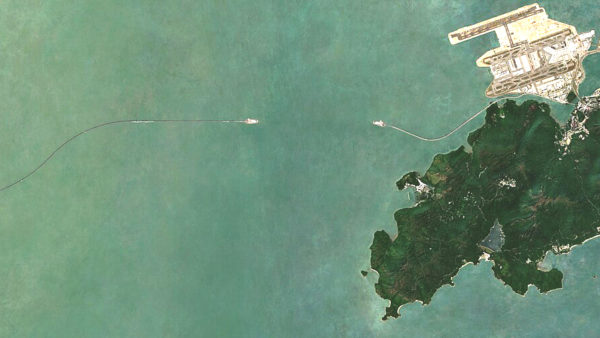
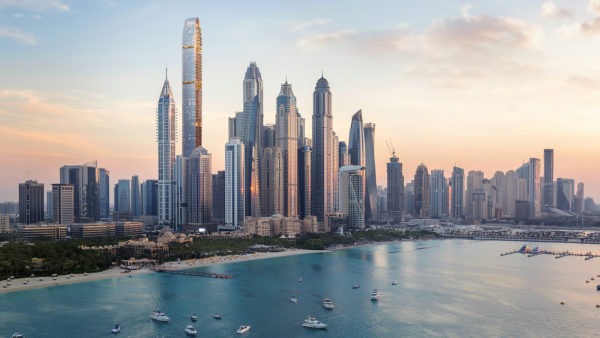
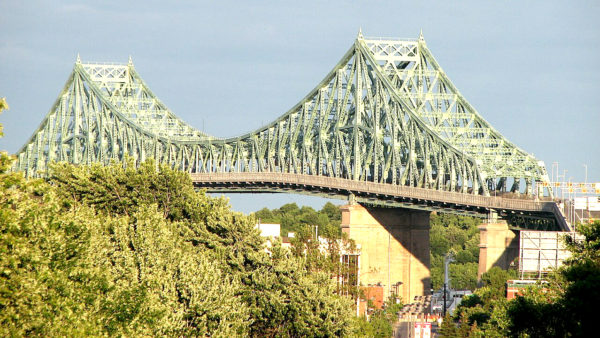
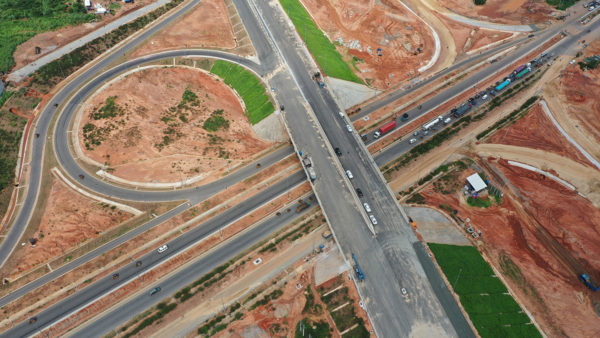

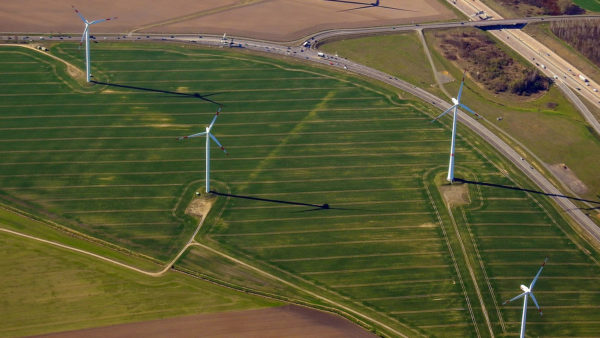
I concur with Francis this a brilliant idea but one needs to do a cost benefit analysis to see if workable in Zambia.
This really seems impracticable. The electrical panel connections are exposed to pooling water in the rain. The panels are near horizontal, which makes sense at the equator, but loses a lot of efficiency in Northern countries. The surface will be quickly worn by traffic, and will get dirty and scuffed up very quickly. It looks like the panels must be shoulder to shoulder – looks fine on the pictured parking lot, but road surfaces frequently crack and separate, making the mounting surface uneven, placing stress on the panels. We’ll see, but this idea is up against a number of real-world problems.
This could ‘pave the way’ for future spin off possibilities, i.e, tapping off some of the energy created, at source, for the re-charging of electric cars. Making the opportinty to create soley electric cars more achievable and attractive to buyers. Or at the very least, plug in points at frequent positions along the solar panelled roads at which to stop and re-charge the batteries of hybrid cars.
Looks like a great idea, just would like to know about the skid resistance on the product?
Cost off the product may seem expensive but if it reduces the need for power stations or reduces the size off power stations that has to be a plus.
Brilliant idea of optimizing space and concretizing sustainability concepts in the built environment. We need such lessons in Zambia. Power deficit has created artificial shocks in the economy and big disturbance socio-economic issues
Good for them! Power generation is the very life blood of any economy! The more the sources of such power are brought into being ,diversified and multiplied the more stable and productive will the economy become in order to lower the our high unemployment rates!
Africa lets move with these brilliant ideas. We got plenty sun but no power.
A much better (cheaper, safer, and more practical) thing to do would be to put them above electrified rail lines. France has 30,000 kilometers of electrified high-speed rail lines. In some cases, there is even infractructure already in place for holding the overhead electric line that the train uses.
I hope it works for the world’s sake. Those panels are going to take a lot of abuse with trucks rolling over them.
This idea is terrible: you put solar on stuff, not stuff on solar. The output of the solar panels will be unnecessarily bad under the conditions, and we will also get subpar roads to boot (there’s a reason we don’t have glass roads). The Dutch just spent 3 million euros on their project, which powers the equivalent of three (3!) homes – 1 million euros per home. Wake up, everybody! Follow the links in this article for details:
http://www.renewablesinternational.net/1000-km-of-solar-roads-in-france/150/452/92996/
This is so laughable. Every engineer with half a brain would tell you it is dead wrong for so many reasons!
The panels must be oriented in such a way as to face the sun, the “glass” between them and the sun determines their efficiency. It needs to be as clear as possible.
Then there’s the issue of friction. Cars need good friction so they can stop efficiently.
Take this all into consideration and you are left with so little efficiency in the end.
Sure, you could say it works, but it would work better if you could just raise them off the ground for 2 meters, or put them on parking lots roofs etc.
This is a political move, has nothing to do with actually wanting to generate electricity. If that were the case, you would consult with engineers, not political advisors.
The subject of solar roadways has been thoroughly debated, there is a huge lot of numbers to reflect the ultimate efficiency of any kind of solar roadway, that takes into account that the panels are perfectly horizontal, the light transmission in the protective glass is real bad. It would cost more to produce electricity from this that using any other kind of “green method”
This is stupid. The panels won’t hold up to the traffic and will get scratched up and lose efficiency if driven over every day.
Government idiocy. Solar is already struggling with effectiveness and putting them in the road with without a doubt reduce their it. But I guess it’s easy to make poor investments with other peoples money. If you want them to be effective, they should be raised above ground to being avoid scratched and they should move with the sun for optimal effectiveness.
Glad they are testing first. Epic fail. Expensive PV panels and will scuff from dirt sand and wheel wear. Poor light harvest means lousy efficiency of conversion to electricity means really expensive electricity. Solar wind battery storage and EVs are the future because of lower cost but not this. Bet this has some surprising fossil fuel or nuke allies in favor of it. If you can’t beat them then find a way to redirect them toward failure.
I’m surprised at this, I’m assuming this is much more different than the husband and wife team in the US. Here’s a youtube video this exposes the flaws in the US version.
https://www.youtube.com/watch?v=Mzzz5DdzyWY
This concept has been proven to be almost pure bunk numerous times. It’s an idea that really needs to die. The costs are astronomical, and the efficiency is terrible.
The example of the Dutch bike path doesn’t mention that it cost 100 times as much to install compared to traditional solar, and had poor efficiency ( solar panels want to be pointed at the sun to be efficient.Horizontal installations are only properly efficient at noon in the summer.
For a fraction of the price, far more power can be generated with cheaper,less resource intensive,longer lasting, more efficient PV panels mounted on rooftops.
Someone is trying to make money off of this terrible idea,hijacking people’s desire for clean energy and exploiting the tendency to be intellectually lazy and jump to conclusions based on inaccurate and intentionally misleading evidence, and it should be stopped.
Has the interruption of sunlight by vehicle passage been considered in the equation? Wouldn’t want to put these anywhere you get gridlock!
Wattway consumes more energy than produced https://sites.google.com/site/olivierdanielo/wattway
Great video giving a view from the other side of the coin with regards to this solar panel highways stuff:
https://www.youtube.com/watch?v=H901KdXgHs4
Sadly, i think this will be an absolutely non-starter, once tested. Looks to be impossible to carry out and the dangers involved with actually driving on this stuff are pretty obvious. A commendable and beautiful idea, on paper, that will sadly be proven unseccessful in reality. Could be the first in many, more do-able ideas, further down the line though, so shouldn’t be dismissed out of hand, as eventually something that WILL work may well come along before too long. Fingers crossed !
They must be quite durable against full sized semi-trucks rolling and skidding over them! They have to be able to take a lot of abuse, and how long until they start to wear through?
It is a very good idea but ROI and longevity is the question. I’d love to see solar roads with possibly inductive charging for electric cars everywhere, but that will take time.
How much does this cost vs standard ground mounted or rooftop PV module installation?
The idea is good but not on a road. They will put what is basically glass, of course they will do it to maximize grip but what about light? Imagine what the road will look like in broad day-light or during night with headlights on!
I wonder if these panels could also be placed between the rails of railroad tracks. If so, the rails would bear the vehicle wear and tear, helping prolong the life of the panels.
Solar roadways are a scam. They’re a pretty successful way of making politicians dump millions into projects that can be shown to fail with a simple back of the envelope calculation. But don’t take my word for it head on over to the EEVBlog where this is all explained in depth https://www.youtube.com/watch?v=HOZBrHqTJk4&ab_channel=EEVblog
I suspect that is the photovoltaic infrastructure equivalent of the Maginot Line.
Perhaps on airport runways?.
What percentage of the time will these panels be shaded by passing cars?
How much output will be lost because these panels are not pointed toward the Sun but installed flat?
How long will it take to destroy the transparency of the panel coating due to tires grinding the surface with sand and pebbles?
As the article states there has been a solar bike path installed in Holland. Why is crowdsourcing being sought to extend that system? If it works then is shouldn’t be hard to get financing.
Hope they run a test before wasting a lot of money….
This is an awful idea, mounting a solar panel flat on a road is the worst place you could mount it, you would get so many more KwH per euro by mounting them on roofs without having to disrupt traffic, and the panels that do not have to withstand trucks driving over them are much cheaper and more efficient.
I’ll just leave this here: https://youtu.be/obS6TUVSZds
And this: https://youtu.be/HOZBrHqTJk4
Superficially a great idea, practically a disaster.
Vehicle skid, surface wear, shade from vehicles, cracks from heavy traffic, rainwater, extreme temperatures, winter snow, ice, salt and sand, econimic ROI for super-reinforced solars? Gimme a break? Someone is either too naive to do their work or got seriously bribed.
Such a horrible idea. They do know how ineffective solar roadways are correct? It would take about what? 2,000 years to finally make back the amount of money wasted on this project in terms of cash to power ratio? Put up real solar panels instead, they at least work.
They have these amazing things all over the place with already installed electrical connections with a more optimal angle to the sun. Buildings or fields on stands are the best place for solar. You could install 3 times (out of ass estimation) the amount of electrical generation by sticking it on existing buildings
Dave Jones explains it all https://www.youtube.com/watch?v=obS6TUVSZds
This is a wonderful innovation, it will be a good idea if adopted in Nigeria. Nigeria has over the years suffered from power shortages which has led to a devastating effect of unemployment, underdevelopment and poverty. It is now time for Nigeria to wake up. I have a strong believe as a renewable technology specialist, that this innovation (Renewable energy) is what Nigeria need to turn it arround.
Luke Asemota CIOB
Way not use paving that generate energy from movement, probably would be more suitable.
Maybe this was announcement was supposed be made on April 1st. How many roads are there in France that are not shaded by trees and buildings ? I cannot imagine how this can be cost-effective compared to putting the panels on buildings.
They should do this on the emergency lanes of interstate highways, where the wear-and-tear would be much less than on the main traffic lanes.
Not a lot of joined-up thinking here. Low sun angle would turn these solar roads into blinding death traps, and at night, radiating to a clear night sky will, for about six months of the year, bring the panel surface well below freezing… add a little dew and what have we got? A skating rink! Especially with the differing emissivity of the panel sections, so we get water and ice together. Keeps the thin film of water betwixt skate – sorry tyre – and ice, well supplied.
Quite obviously just another mega-expensive politician’s vanity project, designed specifically to pretend that action – badly needed action – on environmental issues is being taken, When in fact this is little, possibly nothing, of the sort.
For all the reasons cited in comments this sounds like a boondoggle & then what after the money is wasted, the price of oil & auto fuel rises & the ‘only natural auto fuel tax’ remains as another tax on drivers forever.
Every cent invested in this project weakens the chance in France to use the PV -energy production in the near future. I am sure EDF plays a keyrole in order to prevent competition like the German Market has created over the last ten years , more than one million private electricity producers
force the global players to invest in New Ideas , but not in such a stupid one . Hope the politicians all over the world read all these comments and I thank you all for your input against this Dead Borne Baby
So many good things were said above, it is hard to add a new word to put to flames this project and its carriers/promoters. Let’s not speak about the sustainable development minister, don’t want to name her, it was proven many times she’s a monster of political beast (y’ know, ego is above everything else), not even half of a brain for reality and side effects of major decisions, not to mention either the impact on people’s life. Did you know she is the same who eventually will let build the infamous new airport in Nantes? Check the story, it’s worth a thousand words about her.
That must be a joke!!!
Why not build the solar panels NEXT to the road, angled to the sun.
Waaaaaay more efficient, waaaaay cheaper, a lot easier to maintain…
Actually if you were to place them face down, they’d last a lot longer!
I heard that the drivers that have petrol or diesel cars in France will pay a tax to raise the capital to build these solar roads, so I think that many drivers will replace their conventional cars with green ones in order to dodge the tax.
http://www.alternative-energies.net/the-raised-taxes-on-petrol-will-build-solar-roads-in-france/
This solar roadway stuff is a scam… sry but thinking about paving the roads with this is a romantic idea and nothing else… but as long as we have rooftops to put cheap mass produced solar panels on we absolutely do not even have to think about a significant less efficient “solution” like this one is, both in terms of power output / square and price / square these solar roadway panels loose by far to conventional panels… better put your money into companies actually producing and researching solar panels, they are still improving the efficiency and lowering the cost per square…